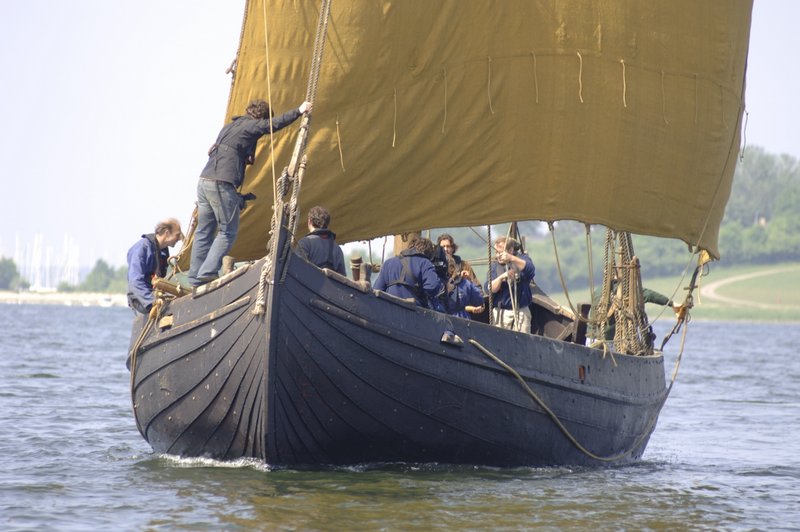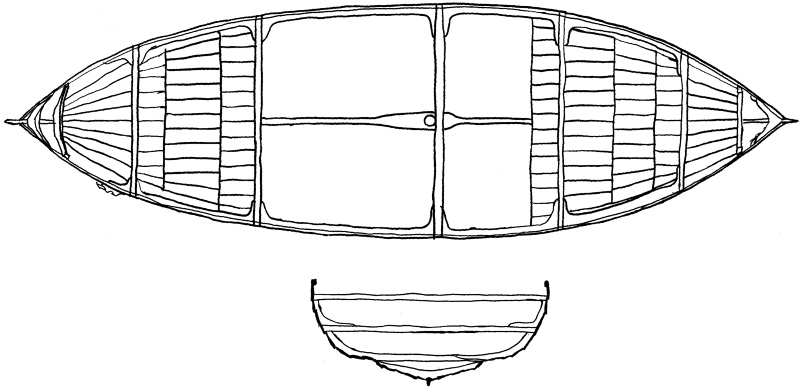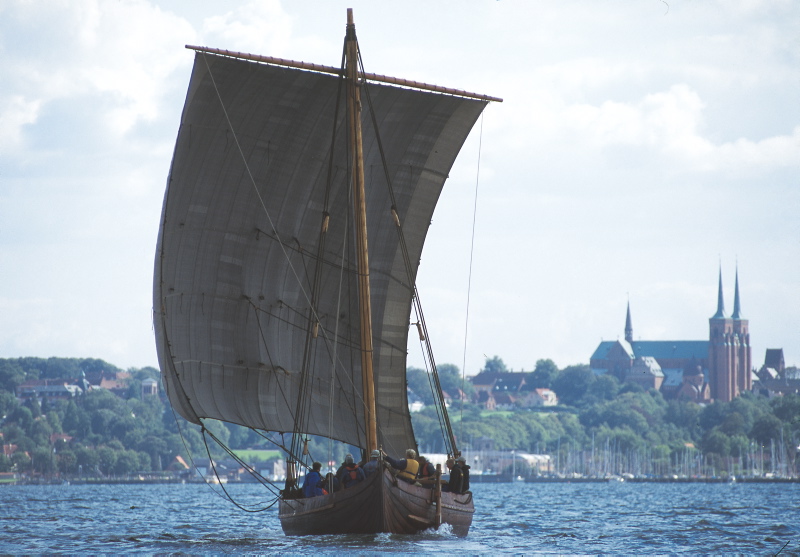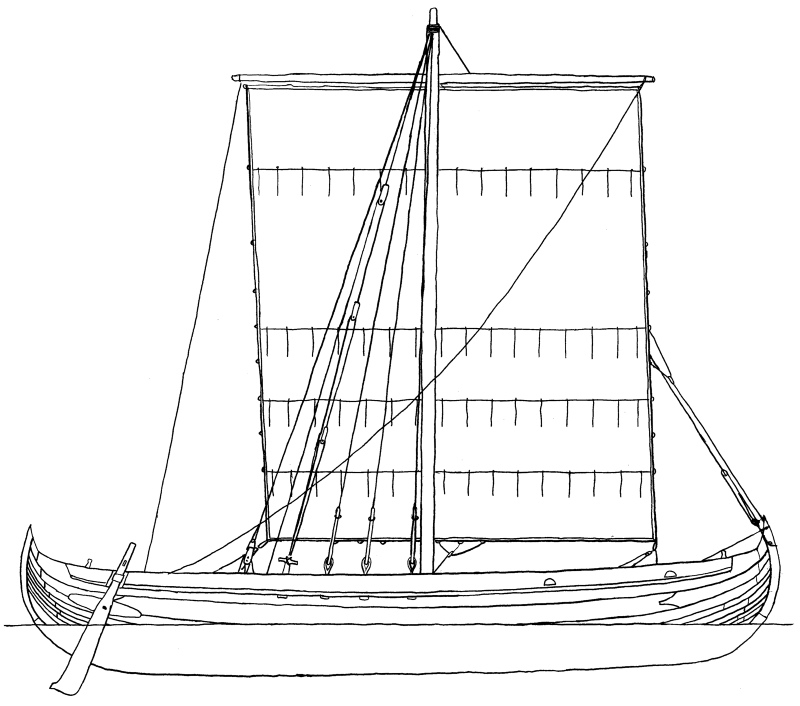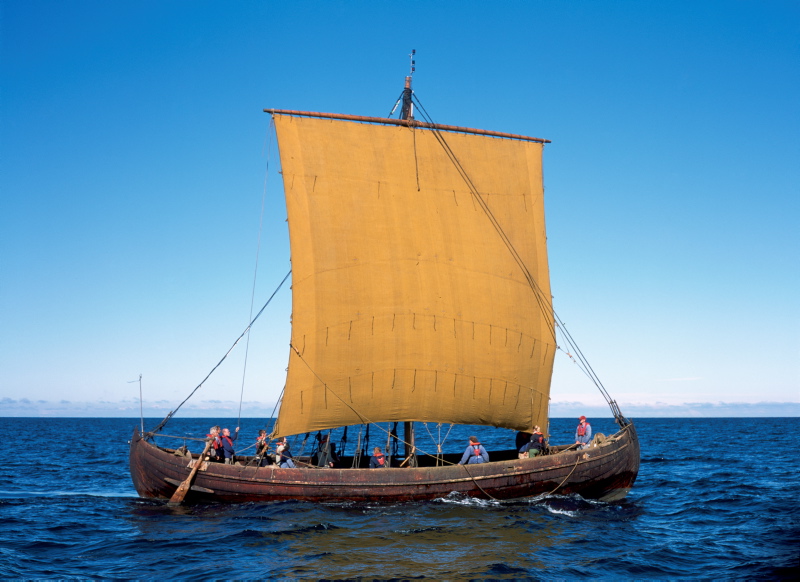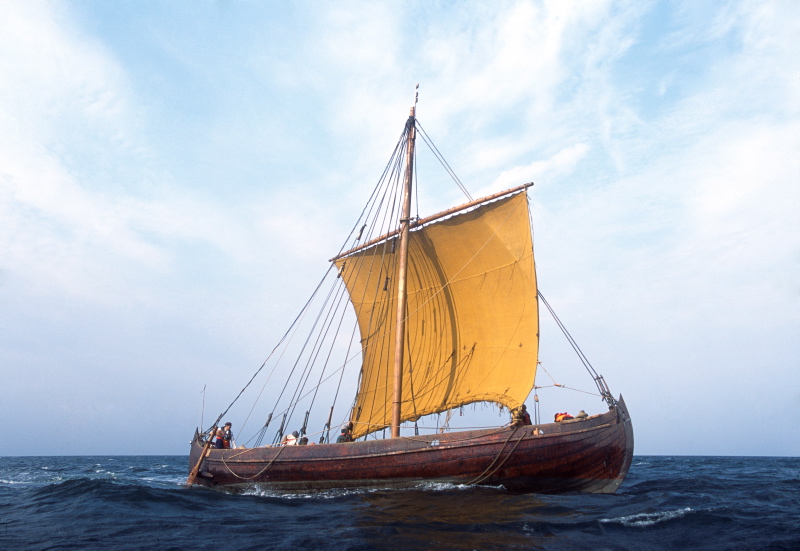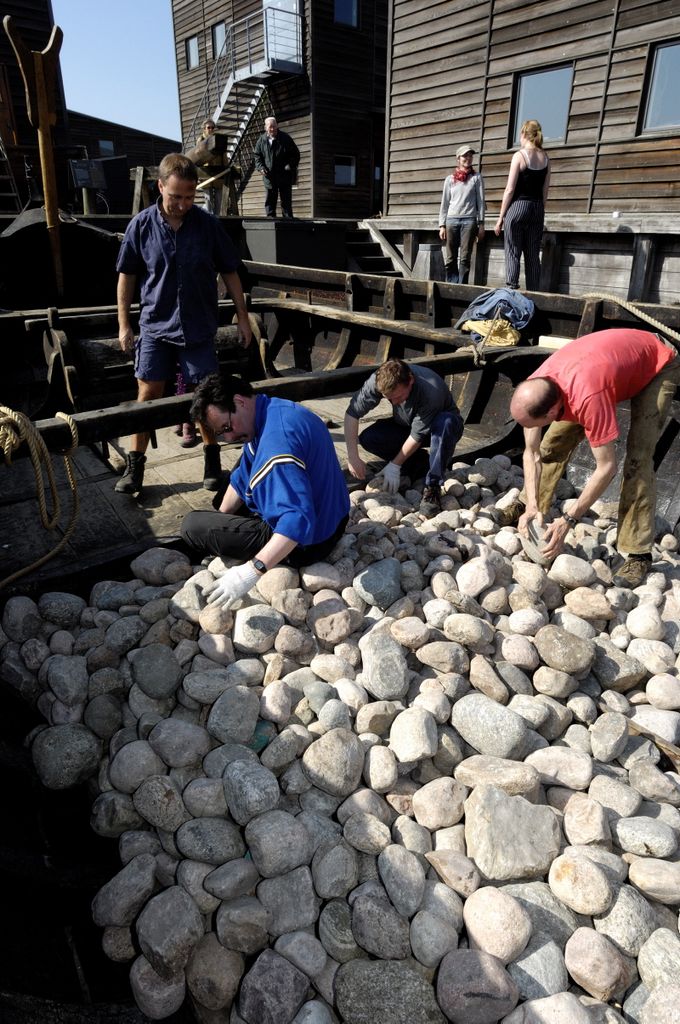Ottar
Reconstruction of Skuldelev 1, an ocean-going trader from the Viking Age, 1030.
Ottar was built of oak, pine and lime at the museum boatyard in 1999-2000. Like Skuldelev 6, the original Skuldelev 1 was built in Sognefjord in Norway around the year 1030. Common to both ships is the special longitudinal change in angle along the bottom of the boat under the waterline, the chine, resulting from the almost vertical planking midway in the otherwise curved cross-section. Presumably the purpose was to provide more resistance to leeway in a vessel with shallow draught and at the same time reduce friction and turbulence by creating two parallel spirals in the water flow under the bottom to increase the speed and make steering easier.
Typical of this ship is its robust and full form that gives both great seaworthiness and large cargo-carrying capacity. Amidships there are two capacious holds and, for and aft, large manoeuvre decks. It must be the type of ocean-going ship the Vikings called a "knarr" and which, according to written sources, was the only type of ship that sailed to Greenland. This small "knarr" is hardly likely to have made such a voyage even though the "Saga Siglar", a Norwegian reconstruction, visited Greenland on a round-the-world voyage in 1984-86. The original ship was most probably an "austfarerknarr" (a "knarr" that sailed eastwards) which carried cargo across the North Sea and the Baltic, two large areas of unsheltered water where seaworthiness is at a premium and where a draught of less than 1 1/2 m when loaded enables it to negotiate shallow bays and rivers.
Today Ottar sails with a sail made of flax, but originally the sail was made of wool. The manufacture of the 90 m2 woollen sail for Ottar was a project in itself during which assistance was received from textile researchers in Denmark, Norway, Sweden, England and Scotland. A great deal of the practical work in recreating the sail was carried out at the special exhibition organised by the Viking Ship Museum, "Sails", in 1999. The wool came from as many as 200 "Spelsauer" sheep - descendents of Norwegian wild sheep. Each one of these rather small sheep yielded about 500 g of usable wool. This had to be spun very tautly and woven incredibly densely to achieve a woollen material which was suitably windproof and durable. To make sure the sail repelled water and that it was even more wind-proof, the finished-woven sail was treated with raw ochre and a mixture of horse mane fat and, water in the ratio of 1:10. The mixture was boiled, cooled down and then rubbed into the sail using glass stones. It is interesting to note that it was the ochre that made the sail tight - and yellow - not the fat. After the sail had been in use for a certain time beef suet was kneaded into the front side to make the surface smooth.
The rigging ropework is also made of authentic materials. The standing rigging that braces the mast is of hemp while the running rigging for the sail is made from horse hair. As an experiment, a little linden bast rope has been used for the centre sheets ("prierne") and for the robands that fasten the sail to the yard using reef knots ("råbåndsknob").
When Ottar and its crew are fully "run in", the ship will be used mainly for sea trials over longer distances in order to research the speed and seaworthiness of the ocean-going trader in practice.
The principle propulsion force of the "knarr" is provided by a square sail of 90 m2, but for manoeuvring in harbour and in calm weather it can be rowed with four long oars. The cargo-carrying capacity is 35 cubicmetres, or about 20 tons.
Information about Ottar
Dockyard: The Viking Ship Museum
Boatbuilder: Ture M. Møller, Tom Nicolajsen, Thomas Finderup, Birger Andersen, Søren Nielsen, Hanus Jensen, Pernille Voss, Rasmus Budde Jensen
Owner: The Viking Ship Museum
Year of construction: 2000
Length: 15.80 meter (52 feet)
Width: 4.80 meter (16 feet)
Depth/draft: 1.20 meter (4 feet)
Weight: 6.10 tons
Total sail area: 90 m2
Displacement: 26 tons
Number of oars: 4
Crew: 6-15 men
Estimated maximum speed, sail: 10 knots
Estimated maximum speed, oars: 1.5 knots
